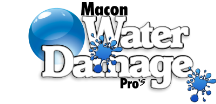Hazardous Mold Remediation Cleanup
When your home or business is exposed to water damage, the problem can persist on, even after things are cleaned up. Mold can occur without you ever knowing it’s there. While it may not be visually evident, mold can impact occupants of your home or business in a variety of negative ways. It’s crucial to have trained professionals help with mold damage restoration.
Serious Health Concerns
The presence of mold in the home can have a significant effect on the health of you and your family members also even your pets. Inhaling or touching mold spores can cause:
- Sneezing / Sneezing fits
- Throat irritation
- Cough
- Headaches
- Nasal and sinus congestion, runny nose
- Itchy eyes
- Skin rash allergy-like symptoms
- Increase in irritability in those suffering with asthma
- Allergic bronchopulmonary aspergillosis
- Athlete’s foot
- Candida albicans Fungus or Thrush
- Respiratory problems, such as wheezing and difficulty breathing, chest tightness
Putting a Stop on Mold
To stop the mold from growing, any standing water must first be removed. In order to make sure it does not continue to become a problem, it’s also important to find the source of the water. Common causes include leaky water pipes and water heaters that have malfunctioned.
When it’s time to start remediation cleanup process, our professionals will first find and isolate the area and protect your belongings in plastic sheeting. The damaged area is then thoroughly cleaned, and it is then completely dried to make sure future mold does not infiltrate the area.
Mold Removal and Cleanup Services You Can Count On
When it comes to mold removal and cleanup, it takes professional help and the latest tools in the industry to ensure the job gets done right the first time. Our team understands the nature of the problem, and has the equipment and expertise to test even the deepest crevices of the home to make sure the problem is completely eradicated.
Some Equipment Used in Mold Remediation Cleanup
- Moisture meter: Measures drying of damaged materials
- Humidity gauge: Often paired with a thermometer
- Digital camera: Documents findings during assessment
- Borescope: Camera at the end of a flexible snake, illuminating potential mold problems inside walls, ceilings and crawl spaces
